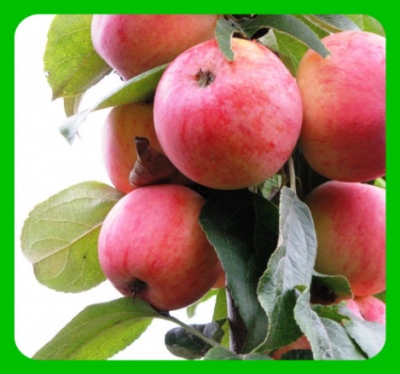
- Authors: I.P. Kalinina, N.V. Ermakova, Z.S. Yashchemskaya (NIISS named after M.A.Lisavenko)
- Taste: sweet and sour
- Scent: weak
- Fruit weight, g: 55-100
- Yield: at the age of 4 years harvest - 13.7 kg, 12 years old - 55 kg
- The beginning of fruiting varieties: for 4 years
- Ripening terms: summer
- Removable maturity: in the second decade of August
- Keeping quality: up to 40 days
- Duration of the consumer period: until the end of September
Apple tree Surkhurai (aka Zarya Altai) - sounds mysterious and romantic. However, for gardeners, it is much more important to understand the practical nuances of this variety. And also it is required to clarify how you can grow this culture according to your requirements.
Breeding history of the variety
Botanical development was carried out at the N.I. Lisavenko. The selection was carried out by I.P. Kalinina, N.V. Ermakova, Z.S. Yashchemskaya (at the end of the 1990s). The experimental station was located near Gorno-Altaysk. The varieties Gornoaltayskoye and Phoenix Altaysky were taken as a basis. Since 2007, this apple tree has been included in the national register of varieties, attributed to the elite group.
Description of the variety
Features, pros and cons
The only weakness of the Surkhurai culture is freezing in the coldest winters (but only to a limited extent). The positive aspects are:
general decent winter hardiness;
excellent fertility;
decent taste.
The height of the apple trees reaches 3.5 m. The crown is compact, has a rounded shape and is not too thick in its structure. Branches are retracted from the trunk at almost right angles. Shoots are of medium thickness. They are characterized by pubescence and the presence of small lentils.
Branches are covered with brown or brownish-brown bark. Leaves are of moderate size. They are characterized by a green or light green color. The root system branches very strongly. It is ideally adapted to finding water.
Ripening and fruiting
Apples ripen in summer. Ripeness for picking is reached in the third decade of August. Then the collection continues almost until the end of September. The very first fruits appear on the 4th year of development. The removed apples can be stored for up to 60 days.
Yield
A four-year-old apple tree yields 13.7 kg of fruit. At the age of 12, this figure rises to 55 kg. According to other sources, up to 50 kg of apples are harvested per year on average for the entire cultivation period. This is quite a decent indicator even for the newest varieties.
Fruits and their taste
Surkhurai apples have a universal purpose. They always have a golden yellow base. The integumentary striped part has a crimson color. The fruit is characterized by a flat-rounded geometric shape. The rind is thin and dense and has an oily appearance.
Other features:
subtle surface points;
sweet and sour taste;
not too pronounced aroma;
keeping quality of apples up to 60 days;
the tasting test was passed by 4.4 points;
Surkhurai apples have a creamy, moderately firm flesh;
the share of sugar in fruits reaches 9.91%;
the concentration of acids is not more than 0.9%.

Growing features



Pollination
This variety is completely self-fertile. Healthy and strong trees will do everything for the gardeners themselves. The only task is to ensure this condition.
Top dressing
For this culture, the following can be used:
manure;
mineral complexes;
ammonium nitrate;
superphosphate;
compost;
humus.

Frost resistance
Surkhurai tolerates cold quite confidently, even at a temperature of -42 degrees. However, preparation for the winter must be carried out without fail. The roots can be damaged in severe frosts. The necessary protection is provided by mulching the trunk circle with peat or foliage. It is recommended to cover the trunk with spruce branches.

Diseases and pests
The variety confidently tolerates scab, powdery mildew and pit bitterness. Other pathologies are rare. With the onset of very strong plant epidemics, Surkhurai may get a little sick, but this ends soon. Further fruiting will continue as usual. Disease prevention involves prophylactic treatment with various drugs in accordance with the instructions.

The apple tree is a popular fruit crop among gardeners. It can be found in many summer cottages. But at the same time, such trees are often affected by various diseases. It is very important to recognize the disease in time and carry out the necessary procedures for a speedy recovery. Otherwise, the fruits will be spoiled, and the tree itself may die altogether.

Review overview
Gardeners' opinions about Surkhurai apple trees are favorable. They note:
the external beauty of the fruit;
small size of trees;
their high fertility;
annual fruiting;
the ability to use the crop both fresh and processed.











































































